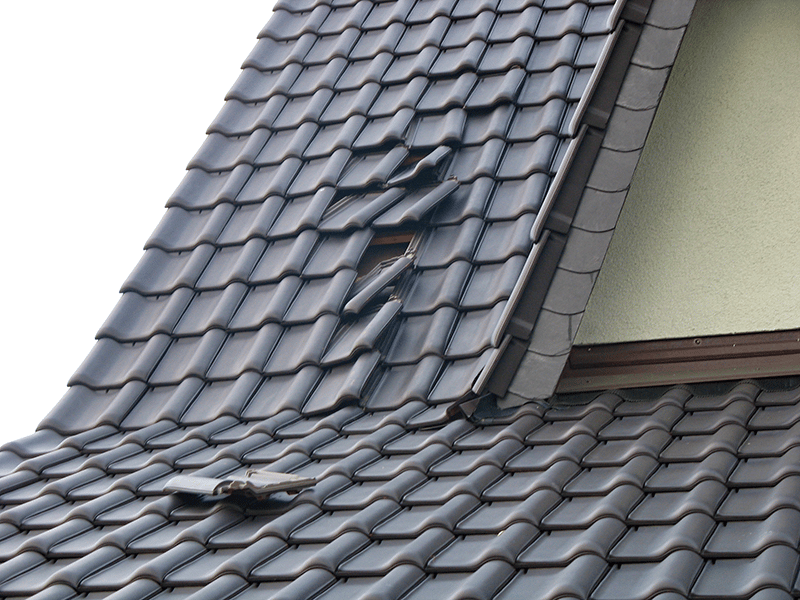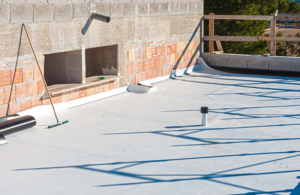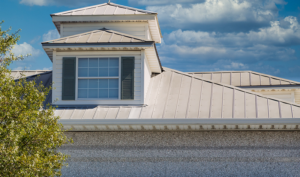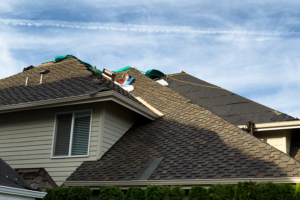Hurricanes are high-energy tropical storms and can have winds over 150 miles per hour in addition to very heavy rain. Preparing your roof for hurricane season is an essential step and preserving your roof from major damage. High winds can rip off tiles and shingles during the storm season and even tear off the roof deck. Here are some preventative steps for hurricane season preparedness you can take as part of your regular maintenance to reduce hurricanes’ damage, whether you’re a homeowner or have a commercial roof.
It’s a good idea to have roof inspections annually before hurricane season if you have an older home. A professional roofing contractor knows what preventative steps to take, and if necessary, a qualified contractor can install hurricane clips or roof straps. Even if building codes in your area don’t require them, an insurance company may offer a discount on your homeowners’ insurance policy. Also, it’s wise to have large trees in your yard trimmed and assessed for risk before hurricane season to reduce your risk of roof damage. These documented steps can help speed up an insurance claim if necessary, and it’s a good idea to review your insurance policies with your insurance agent.
Hurricane winds create differential pressure gradients that cause lift. If shingles or other roofing materials are not securely attached, severe damage can occur, allowing water to infiltrate. In the worst-case scenario, the sheathing, or decking, pulls off, compromising the house’s structural integrity and exposing the interior to both water damage and wind. If you are building, doing a roof replacement, or extensive repair, consider using specialized roofing nails. They have an extra-large head, enhanced ring shank, spiral threads at the top, and can increase resistance to uplift forces by as much as 100 percent and don’t fail even at wind gusts up to 170 mph.
Proactive Steps to Prevent Hurricane Related Roof Damage
Here are some preventative steps to consider as hurricanes and other natural disasters become more frequent and intense in your region.
Roof Bracing
Hip roofs, in which all four sides slope toward a central ridgeline, are naturally more wind-resistant than gable roofs. One way to strengthen a gable is to brace the end walls, which are the most vulnerable to uplift and wind sheer.
Roof Adhesive
From the attic space, run a half-inch bead of construction adhesive along each rafter or truss where it meets the plywood sheathing above. This simple step will roughly triple your protection against severe storm damage.
Roof Strapping
Hurricane straps, 1-inch-wide galvanized-steel ties that extend from the stud to the top plate and over the truss or rafter, tie the roof and walls together. These are now required in many building codes in hurricane-prone regions. While it’s not easy to retrofit them (there’s little maneuvering room in the attic at the edge), it can be done by a skilled roofing contractor, who may need to remove a section of roof sheathing or siding to gain access.
The roof should be built to wind-rating codes for your area with 5/8-inch plywood decking fastened securely to the roof framing for new construction or additions. Waterproof the seams with self-adhering flashing tape, cover the sheathing with roofing felt, and complete with shingles rated for strong winds and impact resistance.
Pruning And Bracing Nearby Trees
Structural pruning, particularly in a tree’s early years, can protect large tree branches and prevent them from developing multiple trunks that can split. Trimming trees dramatically reduces debris if there is a strong storm. If you have a tree that is at risk of splitting, a qualified arborist can cable the trunks appropriately to protect both the tree and your property.
If you’re establishing a new landscape, plant well-rooted varieties of trees, which tend to be slower-growing species with smaller leaves. Ask a local nursery for wind-tolerant tree choices. Some good options include live oak, beech, indian tamarind, and bald cypress.
Roof Shingle and Tile Inspection
Replace damaged or missing shingles and tiles if you have a tile or asphalt roof. With metal roofs, replace any missing metal panel anchors and flashing defects, and ensure that loose soffits, ventilation turbines, and gable eave vents are adequately secured. Clean out the gutters and fix any sagging or poorly-attached sections and downspouts.
While inspecting your roof, pay close attention to the shingles. Check for shingles that are curled or cracked and any missing or loose roof tiles. Loose or damaged shingles and tiles must be repaired or replaced immediately. Inspect the edges for missing nails and spacing. It is essential the gaps not be more than six inches, and the nails must hold the roof shingles and securely connect to the underlying roof deck and the rafters. If visible, check the rafters for any protruding nail tips, rot, mold, or structural damage.
Check the interior of the roof as well, starting with the attic. If there are spots where light penetrates the roof, they indicate weak spots and create small leaks that, over time, lead to more significant problems. This is one case where an ounce of prevention really does equal a pound of cure.
RESOURCES
Blue Nail Roofing has a Master Elite contractor status awarded by the largest roofing manufacturer in North America, GAF. Only 2% of contractors in the US meet the rigorous standards to achieve this status, which means you can be assured you are making a good choice when you select the professionals at Blue Nail to execute your home and business roofing repairs. Call today to schedule a professional evaluation!
Copyright © 2020 Blue Nail Enterprises. All rights reserved. | Privacy Policy
Let Us Nail Your Project! Send us a little information about your roofing or home improvement needs and an expert will reach out shortly.







